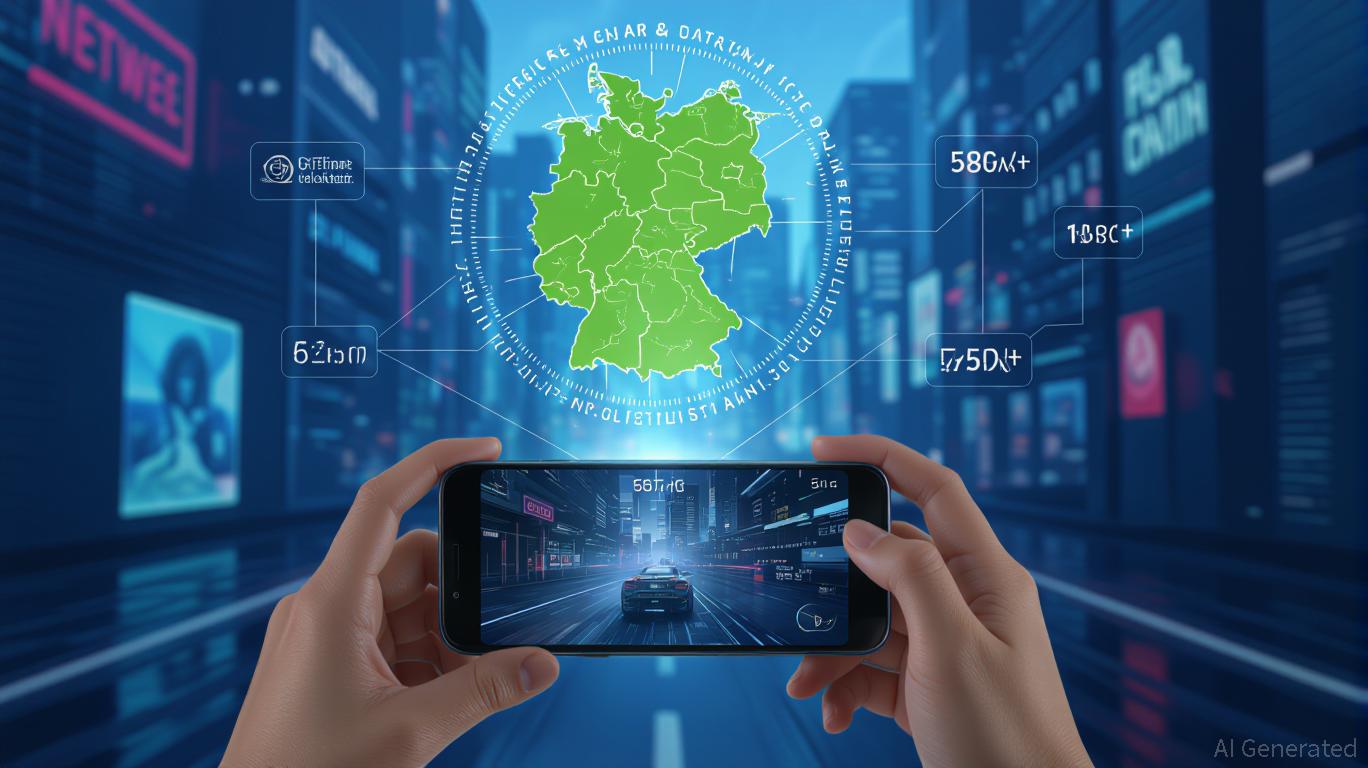
The convergence of 5G and cloud gaming is no longer a speculative horizon but a tangible reality, and Deutsche Telekom’s partnership with NVIDIA represents a pivotal moment in this evolution. By leveraging 5G Standalone (5G SA) technology, network slicing, and L4S (Low Latency, Low Loss, Scalable Throughput), the two firms have created a scalable, latency-optimized use case that could redefine how mobile networks are monetized—and how gamers interact with digital entertainment. For investors, this collaboration is not merely a product launch but a strategic inflection point with profound implications for 5G ARPU growth, cloud gaming adoption, and the broader digital economy.
The Technical Foundation: Network Slicing and L4S as Enablers of Premium Gaming
Deutsche Telekom’s 5G+ Gaming service, launched in autumn 2025, is built on two transformative technologies: network slicing and L4S. Network slicing allows the physical 5G network to be partitioned into virtual slices, each tailored to specific applications. In this case, the gaming slice is engineered for ultra-low latency (sub-10ms) and high reliability, ensuring that cloud gaming sessions are as responsive as local console play. This isolation of traffic from other data streams—such as video streaming or web browsing—prevents congestion and guarantees performance, a critical requirement for real-time gaming.
Complementing this is L4S, a protocol that dynamically adjusts data rates to minimize jitter and latency. Unlike traditional TCP/IP protocols, L4S prioritizes real-time applications by ensuring consistent throughput even during peak usage. Together, these technologies create a “gaming-grade” network experience, enabling users to play titles like Fortnite or Overwatch 2 on smartphones with minimal input lag. For Deutsche Telekom, this represents a shift from commoditized connectivity to differentiated, value-added services—a model that could significantly boost 5G ARPU.
Market Context: Cloud Gaming’s ARPU Potential and Competitive Dynamics
The cloud gaming market is on a trajectory of explosive growth. By 2025, the sector had expanded to over $8 billion in revenue, up from $2–3 billion in 2022, driven by 5G’s ability to deliver low-latency, high-bandwidth experiences. While cloud gaming still accounts for less than 5% of the global gaming industry’s revenue, its integration with subscription models (e.g., Xbox Game Pass Ultimate, GeForce NOW) is accelerating adoption. Deutsche Telekom’s 5G+ Gaming service, which offers free access to GeForce NOW’s 2,300+ titles for MagentaMobil users, is a masterstroke: it leverages NVIDIA’s cloud infrastructure to provide a zero-cost entry point for gamers, while locking in users to Deutsche Telekom’s 5G plans.
This strategy contrasts with competitors like Microsoft and Amazon, which rely on bundled subscriptions (e.g., Xbox Game Pass Ultimate) to monetize cloud gaming. Deutsche Telekom’s approach, however, is more aggressive in capturing market share by removing price barriers. The result? A potential surge in 5G ARPU as users upgrade to 5G+ plans to access the service. Analysts project that 5G ARPU in cloud gaming could grow by 30–40% annually through 2030, driven by expanding device compatibility and infrastructure improvements.
Strategic Implications: A Blueprint for 5G Monetization
The partnership’s significance extends beyond gaming. By demonstrating the viability of network slicing for high-performance applications, Deutsche Telekom is positioning itself as a leader in the next phase of 5G monetization. The company’s 5G+ network already covers 98% of Germany, and the gaming service’s success could pave the way for similar use cases in sectors like remote healthcare, autonomous vehicles, and industrial automation. This diversification of 5G revenue streams is critical for telecoms, which have historically struggled to justify the high costs of 5G infrastructure.
For NVIDIA, the collaboration reinforces its dominance in cloud gaming and AI-driven infrastructure. The Blackwell-powered GeForce NOW platform, with its 62 teraflops of performance and 5K/120fps capabilities, is a technological marvel. By partnering with Deutsche Telekom, NVIDIA is not only expanding its user base but also validating its ecosystem for enterprise clients. The company’s Data Center segment, which grew by 93% year-over-year in Q4 2025, is a testament to the scalability of its cloud gaming and AI solutions.
Investment Considerations: Positioning for the Future
For investors, the Deutsche Telekom-NVIDIA partnership offers multiple angles for consideration. First, Deutsche Telekom’s ability to monetize 5G through premium services like gaming could drive long-term ARPU growth, particularly as it expands device compatibility and geographic reach. The company’s stock has outperformed the European telecom sector in recent months, reflecting market confidence in its 5G strategy.
Second, NVIDIA’s role in enabling this ecosystem positions it as a key beneficiary of the cloud gaming boom. With the global cloud gaming market projected to grow at a 44.3% CAGR through 2030, NVIDIA’s GeForce NOW and Blackwell architecture are well-positioned to capture a significant share. The company’s recent partnerships with Discord, Epic Games, and hardware manufacturers further solidify its ecosystem dominance.
However, risks remain. The cloud gaming market is still nascent, and challenges such as high bandwidth costs, licensing complexities, and user adoption rates could slow growth. Additionally, regulatory scrutiny of tech giants and antitrust concerns may impact NVIDIA’s ability to maintain its competitive edge. Investors should monitor Deutsche Telekom’s 5G+ subscriber growth and NVIDIA’s cloud gaming user metrics for signs of traction.
Conclusion: A Win-Win for Innovation and Investment
Deutsche Telekom and NVIDIA’s 5G+ Gaming partnership is more than a technical achievement—it is a strategic masterclass in leveraging next-generation infrastructure to create value. By combining network slicing, L4S, and cloud gaming, the two firms are not only addressing the pain points of mobile gamers but also unlocking new revenue streams for 5G. For investors, this collaboration represents a rare alignment of technological innovation, market demand, and scalable monetization. As the cloud gaming and 5G ecosystems mature, those who position themselves early in this space are likely to reap substantial rewards.
The question is no longer whether 5G can monetize cloud gaming—but how quickly it will become the standard.
